Dock seeds are prolific everywhere you look right now, so this is a great time to gather them and make dock seed flour.
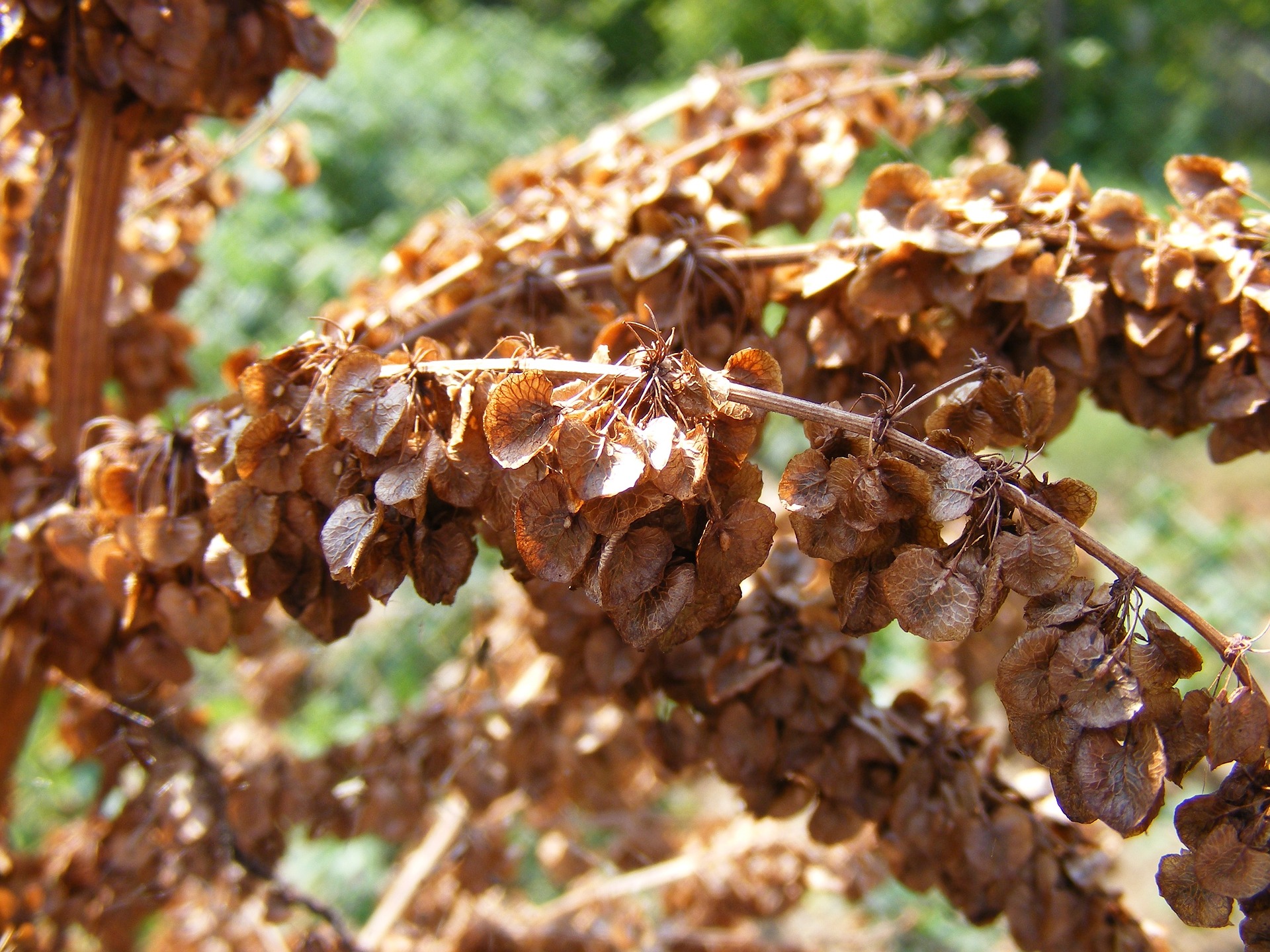
If you haven’t ever cooked with dock seeds, they’re an easy and healthy source of wild flour to forage.
Dock grows as an invasive weed all over the world. You can often find it near fields, ditches and the edges of forests and in parks and meadows. There are various species, such as curly dock (Rumex crispus), and bitter or broadleaf dock (R. obtusifolius). Despite the name, burdock (burr dock) is actually in another plant family (Articum spp), though it is also healthy and useful.
The stalk, roots and young leaves of dock are edible, too.

If you’re new to identifying dock, Foraging Texas has great information on IDing and using dock. Return to Nature also has good ID information.
This was our first year experimenting with dock seeds and we’re still learning, too. Here’s what we’ve found so far.
Many foragers like Gather Victoria recommend not bothering to separate the tiny seeds from the chaff, so I just ground it all together. I toasted mine in a cast iron pan before grinding it, since toasting seems to make everything better. Gather Victoria roasts hers in a 350 degree oven for about 5 minutes.
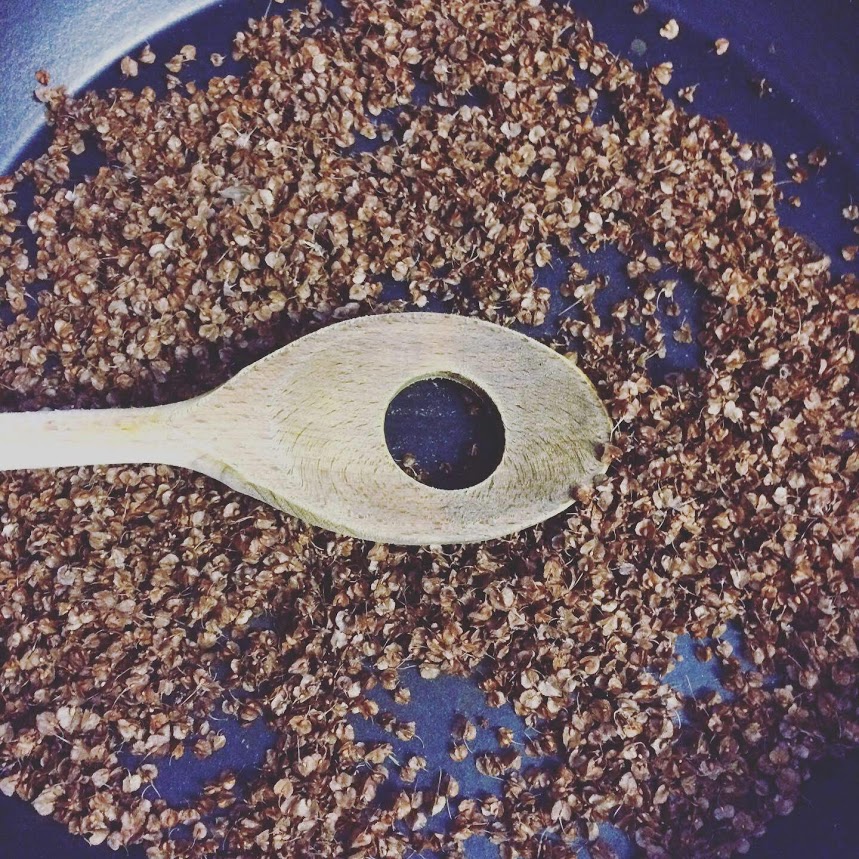
We were down visiting friends in Nebraska last week and my friend brought home some dock stalks from a client’s property (he gave permission and said someone was coming to clear it all out the next day). We used the stiff hollow stalks to make bee houses for a craft at her daughter’s bee-themed birthday party, and I quickly stripped the seeds and spread them out to dry. The hot Nebraska sun had dried them well, but I left the big bowl outside for a good long time to let any stray beasties wander off and clipped the stalks to use for our crafts.

(As a side note, we also discovered that the hollow stalks are great fun for blowing bubbles too.)


My first experiment was with crackers. I made two batches — one with half toasted dock seed flour and half almond flour, and one with half coconut flour. I added a splash of olive oil and some salt and water, plus garlic for the almond flour mix and Trader Joe’s 21 Seasoning Salute to the coconut mix. I pressed them into little flat crackers, poked a few holes with a fork, and baked them on a cookie sheet at 350 until they were crispy (the coconut flour ones took much longer than the almond flour ones, but the time varies greatly by how moist them are and how flat you press them).
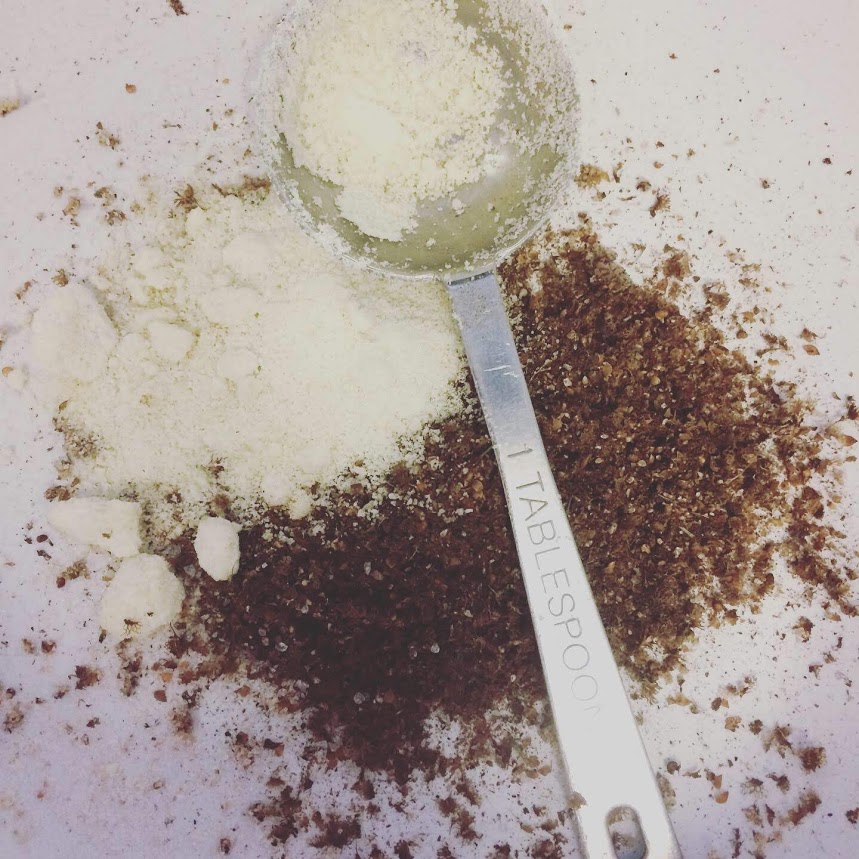
When making big batches, I roll crackers out and cut them into squares with a pizza cutter, but for small batches it works to just hand press them.
We all liked the garlic almond flour version but the coconut flour one didn’t impress us at all. That was the fault of the coconut flour though, which tends to suck all the moisture out of your mouth (Tiffany had a ton of it and had asked me to find uses for it). Everybody asked me to make more of the garlic almond and dock seed crackers though.
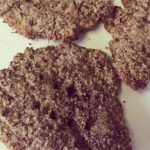
(Forgive this terrible picture. People gobbled them up before I got a proper picture and I quickly used my cell phone to take a photo of the last three on a saucer as the kids were asking for them. I also didn’t even try to make them pretty, as it was my first experiment with just seeing how they’d taste!)
Several folks have told me they also make dock seed crackers. It’s a pretty easy way to start using dock seed flour (or whole seeds), since crackers are so simple to make.
It’s hard to find nutritional information on dock seeds, but I was able to find some information on their vitamin and mineral content, along with ways they were used for medicine over the years.
The Journal of the American Oil Chemists’ Society reported that dock seeds contain 10.62% protein and are also a source of lysine, fiber, phosphorus, calcium and other nutrients.
In the journal Ethnopharmacol, researchers studied traditional uses, phytochemistry and pharmacology of dock and reported on the health benefits of the leaves and roots:
The aerial parts, leaves and roots of the plants are used as vegetables and for the treatment of several health disorders such as mild diabetes, constipation, infections, diarrhoea, oedema, jaundice, and as an antihypertensive, diuretic and analgesic and in case of skin, liver and gallbladder disorders, and inflammation. Many phytochemical investigations on this genus confirmed that Rumex species are rich in anthraquinones, naphthalenes, flavonoids, stilbenoids, triterpenes, carotenoids, and phenolic acids.
They did note that dock, like other greens, does have a fair amount of oxalic acid and could lead to kidney stones in susceptible individuals if consumed in large quantities. This probably relates especially to the leaves, though.
They summarized:
This review confirms that some Rumex species have emerged as a good source of the traditional medicine for treatment of inflammation, cancer and different bacterial infections and provides new insights for further promising investigations on isolated compounds, especially quercetin 3-O-glucoside, emodin, nepodin, torachrysone, and trans-resveratrol to find novel therapeutics and aid drug discovery. In addition, hepatoprotective, antiviral and antidiabetic activities should have priority in future pharmacological studies.
Here are some dock seed flour recipes from around the web that have caught my eye.
Thousand Wishes has Curly dock seeds flour bread
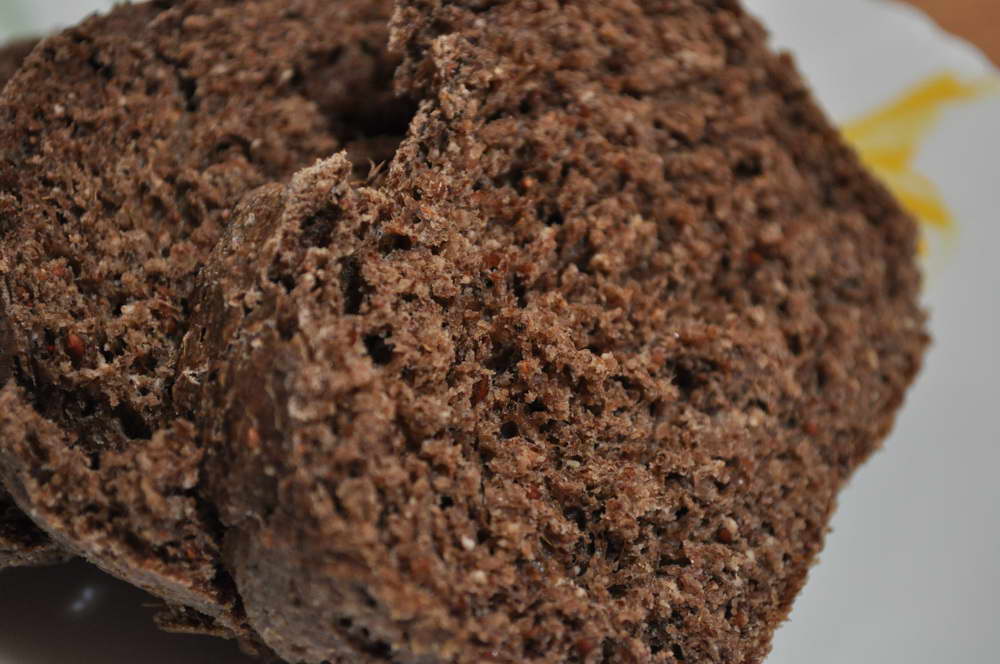
The sparrow chef has yellow dock bread
Learning and Yearning has Dock Seed Brownies
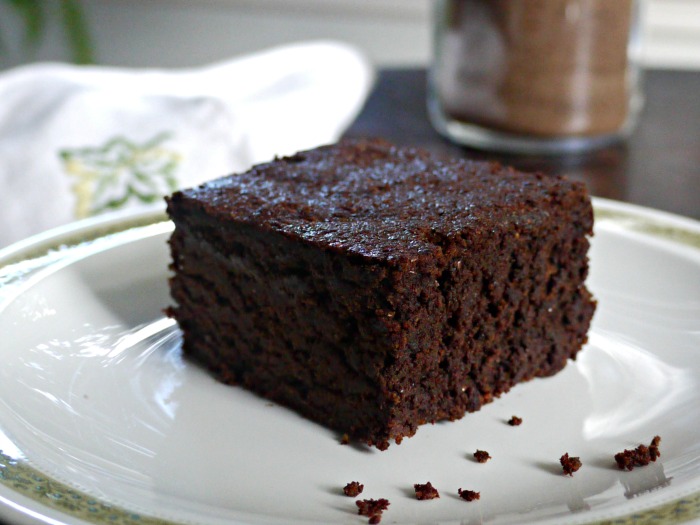
Edible Wild Food has a simple Quarter Dock Seed Crackers recipe that also uses lambsquarters seeds
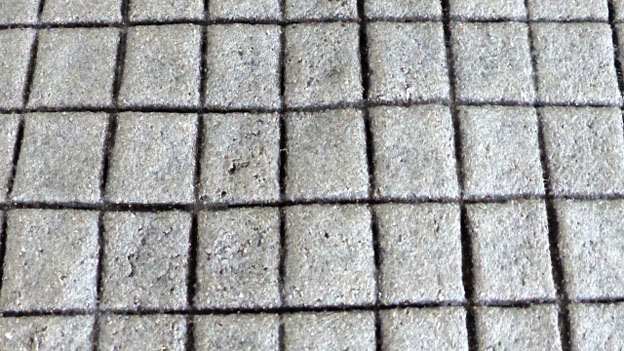
Finally, Gather Victoria has a decadent looking Double Chocolate Curly Dock Seed Cake

Have you cooked with dock seeds? How do you like to use them?



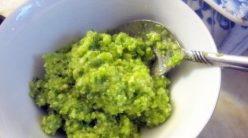


4 thoughts on “Cooking with Dock Seeds”
monica
(April 28, 2022 - 11:43 pm)is it true that using all dock seed flour in a baked good, will give most people the runs? if yes then is thier a simple way to process the seeds before grinding into flour to minimize this effect? will any of the edible dock species that produce an abundance of edible seeds that are easily ground into flour grow in Hawaii? does dock seed flour contain enough gluten to use straight up to bake bread or would i need to combine it with a flour that has gluten in it?
Alicia Bayer
(May 2, 2022 - 2:29 pm)Using all dock seed in baked goods would result in very dense baked goods. I’ve never heard that but I wouldn’t recommend it for baked goods anyway. There is no gluten in dock seed so for things that you’d want to rise you’d probably be best using 1 part ground dock seed to 3 parts wheat flour or a gluten free mix. I’m not familiar with foraging in Hawaii but a quick search should tell you what species grow where you are. Dock seeds are very high in fiber so too much at first could cause gastro issues. Also, with any new food (foraged or not), it’s wise to have a little bit the first time in case you are allergic or sensitive.
Gretchen K
(July 22, 2022 - 12:34 pm)I just discovered curly dock seed. I also left my seeds sitting out to let critter hitchhikers escape before putting the seeds and chaff in the oven at 170º F for 30 min. This served two purposes: it dried out the grain, and lightly roasted it. Using a Wonder Mill Junior (a stone mill), I made my first batch of fine flour. I experimented with a simple oatmeal cookie recipe from Americas Test Kitchen, because it was not overwhelmed with spices. I wanted to taste the dock (which, btw, pairs excellently with a bit of cinnamon). I made 2 changes. The recipe called for one whole egg and one egg yolk. I used two whole eggs to slightly increase the moisture to offset the whole-bran (dry) nature of my dock. Then I did two tests. One with replacing 25% of the flour with dock flour, and the other replacing 50% with dock flour. The dock makes the cookie look as though you’ve added cocoa! The 25% test produced a cookie I would easily make again even for muggles (non-foraging folk): great taste, great texture and flavor, holds together very well. Because of the non-gluten nature of the dock, the cookies from the 50% test still held together, but the crumb was much looser. You can pick up the whole cookie without it coming apart and I brought some to work and they travelled fine, but they are not as resilient as the cookie with more AP flour. The dock flavor was much more prevalent here, and my forager friends loved it. My next experiment will be zucchini bread before I try adding it to a bread loaf. In my opinion, dock flour makes a great partial substitute for AP flour, but I wouldn’t recommend anything more than 50%, and remember to slightly increase the moisture content (which is why I’m testing zucchini bread next… the high moisture content of the squash should offset the whole-grain dock.)
Edible weeds – dock seed ‘coffee’ | Chronicles of a humpy dweller
(November 22, 2023 - 7:39 pm)[…] is a nutrient rich plant, so I am going to keep collecting the seed for flour and the leaves for greens as the opportunity […]